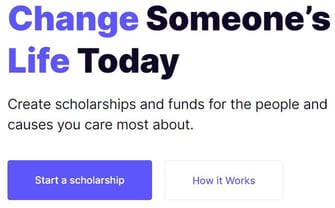
In a Nutshell: Student loan debt has increased in the 21st century as students turn to loans to finance the rising costs of higher education. Bold.org fights student loan debt by helping students access scholarships. The organization awards thousands of scholarships yearly and streamlines the application process. Bold.org also works with donors to create and manage new scholarship opportunities.
Childhood is a time of marked growth — physically, emotionally, and developmentally. Children grow so much between birth and their teen years that we’ve developed terms to refer to different stages of childhood.
The five primary stages of childhood development are newborn (one to two months old), infant (three months to one year old), toddler (one to three years old), preschool (three to five years old), and school-age (six to 17 years old).
Various researchers and child development experts may use slightly different terminology and age ranges to describe the stages of childhood development and the associated age ranges for each stage. Still, most experts agree that childhood ends once a person reaches age 18.
Individuals who’ve reached the age of 18 have rights they didn’t have when they were 17, including voting in national and local elections, joining the military without parental consent, and playing the lottery. After 17 years of childhood, most 18-year-olds face one of the most significant decisions they’ll encounter over the course of their entire adult lives: whether to pursue higher education and how to pay for it.
Many students use loans to finance their college-related expenses. Unfortunately, 18-year-olds may not fully grasp the ramifications of going into debt.

Bold.org, an organization that assists students seeking scholarships and works with donors to establish and fund scholarships, was founded in 2019. We spoke with Dror Liebenthal, Bold.org’s CEO and Founder, to learn about the organization’s efforts to help parties on both sides of the scholarship equation.
“When I founded Bold.org, total student loan debt was between $1.6 and $1.7 trillion,” Liebenthal said. “Since that time, it’s grown closer to $1.8 trillion, and it continues to move in the wrong direction. Scholarships can help students manage the cost of their education and minimize the potential student loan debt they face in the future.”
Awarding Thousands of Scholarships Annually
Liebenthal said he received scholarships that opened educational doors for him. In addition to providing financial aid, scholarships can motivate students and help them to believe in themselves.
“For a young person, the impact of receiving a scholarship is twofold,” Liebenthal said. “The financial component is huge, but the level of confidence a scholarship recipient receives is also really impactful.”
Bold.org awards thousands of scholarships every year. Liebenthal said informing students that they’re receiving a scholarship is one of the most fulfilling parts of his job.
“Many scholarship recipients are amazed that they’ve won a scholarship,” Liebenthal said. “Their reactions when they’re notified that they’ve won a scholarship are awesome.”

Early in his career, Liebenthal managed scholarship programs for various companies. Liebenthal said his work experience opened his eyes to how difficult it can be for companies and individuals to create and successfully operate scholarship programs.
“Managing a scholarship program can be a very manual process,” Liebenthal explained. “There’s a lot of setup work involved in terms of evaluating applications. A great deal of paperwork is also required to support the legal and financial infrastructure of managing scholarships. It’s challenging.”
Liebenthal said many companies who set out to establish scholarship programs ultimately decide to hire an outside consultant or team to develop and manage the program for them.
“In some cases, the companies end up spending more money to operate their scholarship program than they give away through their actual scholarship awards,” Liebenthal added.
Bold.org is the result of Liebenthal’s desire to serve students and donors. Liebenthal said Bold.org is the largest scholarship platform in the U.S. and is the first organization to offer a platform that works directly with both students and donors.
Bold.org helps numerous donors each year establish new scholarship opportunities. Liebenthal said the organization awards millions of dollars annually to deserving students and is expanding its services to support additional dimensions of a student’s financial journey.
Helping Students Find the Best-Fit Scholarships
Liebenthal said Bold.org hasn’t had difficulty locating donors interested in creating scholarships to support students and their educational pursuits.
“Nearly all of our donor interest is inbound,” Liebenthal said. “There are tons of companies that want to create scholarships. But previously, there wasn’t a readily available, modern, and easy way to do it. The money people wanted to donate to students was just staying on the sidelines.”
Bold.org offers a straightforward process to donors to allow them to create new scholarships efficiently.
“Donors can create scholarships in a matter of minutes,” Liebenthal detailed. “And 100% of the donations we receive go directly to scholarship recipients. That draws a great deal of interest from donors, and it’s something that we’re very proud of.”

Bold.org directs students who join its platform to create a user profile. The organization requires students to include specific information in their profiles, including their background, interests, intended area(s) of study, grade point average, and the institution of higher learning they plan to attend. Liebenthal said a student’s profile helps the Bold.org team understand who a student is and what their goals are with respect to career aspirations, education, and finances.
Applying for scholarships can be a cumbersome and time-consuming process. Liebenthal said students who apply for scholarships outside of Bold.org may have to submit the same information and answer the same questions repeatedly.
Bold.org’s profile-building operation captures a student’s information and attaches it to each unique scholarship application the student completes, saving the student time and frustration.
The Domino Effect of Student Debt
Bold.org awards scholarships to students through the same platform students use to apply for the organization’s financial awards. Bold.org offers an engaging user experience to students, who Liebenthal said can feel overwhelmed when searching for scholarship programs to apply to.
“There are so many different scholarships out there,” Liebenthal said. “It can be difficult for a student to find the ones that are right for them.”
Bold.org invests in matching technology that helps to increase the efficiency of a student’s scholarship search.
The organization also takes steps to ensure that all of its scholarship funds are awarded to students each year. Liebenthal said the organization will call eligible students and suggest they apply for a particular scholarship opportunity if it believes the student has a strong likelihood of being awarded the scholarship.
“Part of our role is educating students about which scholarships exist,” Liebenthal said. “We focus on putting the right resources in front of students.”
Students who graduate college with student loan debt may struggle to repay their loans. Liebenthal said the lingering effects of student loan debt can create a domino effect.
“People with a great deal of student loan debt are less likely to buy a home or start a family or new business venture,” Liebenthal said. “Student loan debt also hinders a person’s ability to save for their future.”
College tuition costs have soared in the 21st century. Liebenthal said the rising costs of higher education have motivated students to examine whether attending college directly after high school is in their best interest.
“I think that’s a positive development,” Liebenthal added. “Evaluating higher education from a financial perspective leads to growth in alternative education forms, including technical training programs and job-specific training. And companies are increasingly more receptive to those forms of education as well.”






